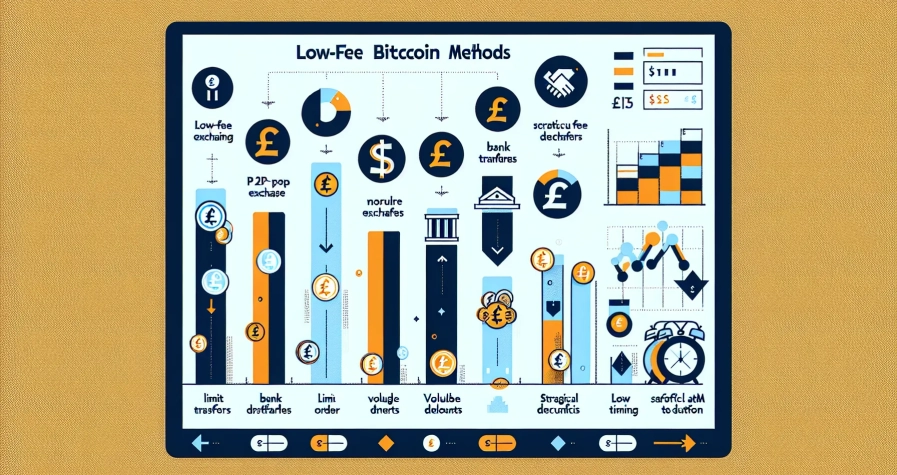You’ve probably heard about cryptocurrency mining and staking but might be wondering what they actually are and how they work. These two fundamental processes keep blockchain networks running whilst offering opportunities for crypto enthusiasts to earn rewards.
Mining involves using powerful computers to solve complex mathematical puzzles that validate transactions and secure the network. Miners compete to add new blocks to the blockchain and receive cryptocurrency rewards for their efforts. Bitcoin is the most famous example of a cryptocurrency that relies on mining.
Staking takes a different approach altogether. Instead of computational power you’ll lock up your existing cryptocurrency holdings to help validate transactions and maintain network security. This energy-efficient alternative has gained massive popularity with networks like Ethereum 2.0 and Cardano leading the way. Both methods offer unique advantages and drawbacks that you’ll need to understand before diving in.
Understanding Cryptocurrency Mining
Cryptocurrency mining forms the backbone of blockchain security through computational power and cryptographic verification. This process transforms your computer into a validator that maintains network integrity whilst earning digital rewards.
How Mining Works
Mining transforms your computing resources into blockchain validation tools through systematic puzzle-solving operations. Your mining hardware competes with thousands of other miners globally to solve complex mathematical equations called hash functions.
Core mining operations include:
- Transaction verification – Your system validates pending cryptocurrency transfers
- Block creation – Verified transactions get bundled into new blockchain blocks
- Hash computation – Your hardware generates unique digital fingerprints for each block
- Network broadcasting – Successfully mined blocks get distributed across the entire network
- Reward distribution – Block creators receive predetermined cryptocurrency amounts
The mining process operates continuously with new blocks generated every 10 minutes on Bitcoin’s network. Your mining success depends on computational speed measured in hashes per second, with faster equipment providing higher earning potential.
Proof of Work Consensus Mechanism
Proof of Work establishes network security through computational competition amongst miners worldwide. This consensus mechanism requires your mining equipment to expend real energy solving cryptographic puzzles before validating transactions.
Proof of Work characteristics:
| Feature | Description | Impact |
|---|---|---|
| Difficulty adjustment | Network automatically increases puzzle complexity | Maintains consistent block times |
| Miner competition | Thousands compete for each block reward | Ensures decentralised validation |
| Energy expenditure | Real electricity costs prevent malicious attacks | Creates economic security barriers |
| Immutable records | Computational work makes blockchain tampering expensive | Provides transaction finality |
Your mining participation strengthens network security through distributed validation. Each hash calculation represents computational proof that you’ve invested resources in maintaining blockchain integrity.
Mining Hardware and Energy Requirements
Mining profitability depends heavily on your hardware selection and local electricity costs. Modern cryptocurrency mining demands specialised equipment designed for maximum computational efficiency.
Primary mining hardware types:
- ASIC miners – Purpose-built chips delivering 100+ TH/s hashrates for Bitcoin mining
- GPU systems – Graphics cards providing flexible mining across multiple cryptocurrencies
- CPU mining – Basic processors suitable only for experimental or educational purposes
- FPGA devices – Programmable chips offering moderate efficiency for specific algorithms
Energy consumption represents your largest ongoing mining expense. Bitcoin mining operations typically consume 3,000-7,000 watts per mining rig whilst generating substantial heat requiring cooling systems.
Mining facility requirements:
- Dedicated electrical circuits supporting high-amperage loads
- Industrial cooling systems maintaining optimal operating temperatures
- Backup power solutions preventing downtime during electrical outages
- Fire suppression systems protecting valuable mining equipment
Your location significantly impacts mining profitability through electricity pricing variations. Countries with renewable energy sources like Iceland and Norway offer competitive advantages through lower operational costs.
What Is Cryptocurrency Staking?
Cryptocurrency staking involves holding a certain amount of native blockchain tokens in your wallet or delegating them to a validator to participate in the network’s transaction validation process. You earn rewards by locking up your tokens as collateral whilst contributing to network security through the Proof of Stake consensus mechanism.
Proof of Stake Consensus Mechanism
Proof of Stake (PoS) consensus protocol selects validators based on the quantity and duration of tokens you stake in the network. You must stake a minimum amount to become eligible for validation, with the system choosing validators pseudo-randomly whilst giving higher stakes increased selection probability.
PoS variants prevent centralisation through different selection criteria:
- Effective balance: Total coins you hold in your staking wallet
- Coin age: Amount multiplied by how long you’ve held the tokens
- Time staked: Duration your tokens have been locked in the network
These mechanisms ensure wealthier participants don’t dominate block creation whilst maintaining network decentralisation. The system consumes significantly less energy than Proof of Work mining since it doesn’t require intensive computational puzzles.
How Staking Validates Transactions
Staking validation operates through a structured process where you participate as either a validator or delegator. Validators propose blocks of transactions for network approval whilst other validators verify the block’s accuracy and legitimacy.
The validation process follows these steps:
- Block proposal: Selected validators create blocks containing pending transactions
- Verification: Other validators examine and confirm the proposed block’s validity
- Consensus: Network reaches agreement on block acceptance
- Reward distribution: Successful validators receive block rewards in native tokens
- Penalty enforcement: Dishonest validators lose staked tokens through slashing mechanisms
Validators continuously cross-check each other’s work to maintain network integrity. You face financial penalties if you validate fraudulent transactions or attempt to manipulate the system.
Minimum Staking Requirements
Each blockchain network establishes specific minimum staking thresholds for validator eligibility. You might need to stake anywhere from tens to thousands of tokens depending on the particular network’s requirements.
| Network | Minimum Staking Amount | Alternative Options |
|---|---|---|
| Ethereum | 32 ETH | Staking pools available |
| Cardano | Variable pool requirements | Delegation to stake pools |
| Polkadot | Variable nomination amounts | Nominator pools |
Staking pools allow you to combine smaller token amounts with other holders to meet minimum thresholds. You share proportional rewards based on your contribution whilst the pool operator handles technical validation requirements. This democratises staking participation for holders with limited token quantities.
Key Differences Between Mining and Staking
Mining and staking represent fundamentally different approaches to blockchain participation and earning cryptocurrency rewards. Understanding these distinctions helps you choose the method that best aligns with your resources and investment goals.
Energy Consumption Comparison
Mining consumes extensive amounts of electricity due to the continuous operation of powerful computational hardware. Bitcoin mining alone requires approximately 150 terawatt-hours annually, equivalent to the energy consumption of entire countries like Argentina. Your mining operation runs specialised ASIC machines or GPU systems 24/7, generating significant heat that requires additional cooling infrastructure.
Staking uses minimal energy consumption, requiring only basic computational power to maintain network connectivity. Your staking setup operates on standard computers or even mobile devices, consuming roughly 99.9% less energy than equivalent mining operations. Ethereum’s transition from mining to staking in 2022 reduced the network’s energy consumption by over 99.95%, demonstrating the environmental efficiency of PoS systems.
| Energy Metric | Mining | Staking |
|---|---|---|
| Annual consumption | 150+ TWh (Bitcoin) | <0.1 TWh (Ethereum PoS) |
| Hardware requirements | Specialised ASICs/GPUs | Standard computers |
| Cooling needs | Extensive ventilation systems | Minimal cooling required |
| Environmental impact | High carbon footprint | Negligible environmental impact |
Investment Requirements
Mining demands substantial upfront capital investment in specialised hardware and infrastructure. Your initial setup costs range from £2,000 for basic GPU systems to £50,000+ for professional ASIC mining operations. Additional expenses include electrical installations, cooling systems, and ongoing electricity bills that can exceed £500 monthly for moderate operations.
Staking requires only the cryptocurrency tokens you wish to stake, with no hardware purchases necessary. Your investment consists entirely of the tokens locked as collateral, starting from as little as 0.1 ETH (approximately £200) on many platforms. Staking pools allow participation with even smaller amounts, making this method accessible to investors with limited capital.
| Investment Aspect | Mining | Staking |
|---|---|---|
| Initial hardware cost | £2,000-£50,000+ | £0 (existing device) |
| Infrastructure setup | £1,000-£10,000+ | £0 |
| Minimum entry | £5,000-£15,000 | £50-£200 |
| Ongoing operational costs | £300-£2,000+ monthly | £0-£50 monthly |
Reward Distribution Methods
Mining rewards depend on your computational contribution to solving cryptographic puzzles and successfully mining blocks. Your earnings fluctuate based on network difficulty, competition from other miners, and electricity costs. Bitcoin miners currently receive 6.25 BTC per block plus transaction fees, distributed among mining pools based on contributed hash power.
Staking rewards are distributed proportionally to your stake amount and validation participation. Your returns typically range from 4-20% annually, depending on the blockchain network and staking duration. Validators earn rewards for proposing and validating blocks, with penalties applied for malicious behaviour or extended offline periods. Most PoS networks offer predictable reward structures, allowing you to calculate expected returns based on your staked amount.
| Reward Factor | Mining | Staking |
|---|---|---|
| Distribution basis | Computational power contribution | Proportional stake amount |
| Reward predictability | Variable, competition-dependent | Relatively stable percentage |
| Earning frequency | Block discovery (irregular) | Regular epochs/periods |
| Typical annual returns | 5-25% (highly variable) | 4-20% (more consistent) |
Popular Cryptocurrencies for Mining and Staking
Mining and staking opportunities vary significantly across different cryptocurrency networks, with each offering unique rewards and requirements. You can choose between established proof-of-work cryptocurrencies for mining or newer proof-of-stake networks for staking based on your resources and preferences.
Bitcoin and Ethereum Mining
Bitcoin remains the most prominent cryptocurrency for mining operations, requiring specialised ASIC hardware to compete effectively in the network. You’ll face significant competition from industrial mining operations that consume over 120 terawatt-hours annually across global Bitcoin mining activities. Mining rewards fluctuate based on network difficulty and Bitcoin’s price, with block rewards currently set at 6.25 BTC per successful block discovery.
Ethereum previously offered mining opportunities through GPU-based systems before transitioning to proof-of-stake in September 2022. Ethereum’s mining era ended with “The Merge,” eliminating mining rewards and shifting all validation to staking mechanisms. You can no longer mine Ethereum directly, though alternative cryptocurrencies like Ethereum Classic continue supporting GPU mining operations.
Mining profitability depends heavily on electricity costs, hardware efficiency, and market conditions. You’ll typically see break-even electricity rates around £0.05-0.08 per kWh for Bitcoin mining, though this varies with equipment specifications and local energy pricing.
Ethereum 2.0 and Cardano Staking
Ethereum 2.0 operates entirely on proof-of-stake consensus, requiring you to stake a minimum of 32 ETH (approximately £50,000-70,000) to run an independent validator node. You can participate with smaller amounts through staking pools or centralised exchanges, earning annual rewards typically ranging from 4-7% on your staked ETH holdings.
Cardano offers more accessible staking options with no minimum stake requirements for delegation to existing stake pools. You maintain control of your ADA tokens while delegating to pool operators, earning rewards of approximately 4-6% annually based on pool performance and network parameters. Cardano’s staking mechanism operates through epochs lasting five days, with rewards distributed automatically to delegators.
Both networks implement slashing penalties for validator misconduct, though Cardano’s delegation system protects individual stakers from these risks. You can unstake your tokens relatively quickly on both networks, with Ethereum requiring approximately 24-48 hours and Cardano allowing immediate undelegation while rewards continue for two additional epochs.
Staking rewards on both platforms are considered taxable income in the UK, requiring you to report earnings in annual tax returns based on the pound sterling value at the time of receipt.
Risks and Considerations
Both mining and staking expose you to significant financial and operational risks that can impact your profitability and investment security. Understanding these risks helps you make informed decisions about your cryptocurrency activities.
Market Volatility Impact
Price fluctuations directly affect your mining and staking returns regardless of reward percentages earned. You might receive a 15% annual percentage yield (APY) from staking, but the underlying cryptocurrency’s value can drop 50% or more during market downturns, resulting in substantial losses.
Mining operations face additional volatility challenges through equipment depreciation and operational costs. Your mining hardware loses value as newer, more efficient models enter the market, while electricity expenses remain constant even when cryptocurrency prices decline. Revenue calculations become unpredictable when coin prices drop below operational break-even points, forcing you to operate at losses or shut down temporarily.
Staking rewards compound volatility risks through lock-up periods. You can’t liquidate staked tokens immediately during market crashes, potentially missing opportunities to minimise losses. Some networks impose unbonding periods ranging from days to weeks, during which your tokens remain locked despite unfavourable market conditions.
Technical and Security Risks
Network congestion affects both mining and staking reward distribution mechanisms. Mining difficulty adjustments can reduce your share of block rewards when more participants join the network, while staking rewards may decrease during periods of high validator participation.
Validators face slashing penalties for malicious behaviour or operational errors, resulting in permanent loss of staked tokens. Ethereum 2.0 implements slashing conditions that can reduce your stake by up to 100% for severe infractions such as double-signing or proposing invalid blocks. Technical failures including server downtime, internet outages, or software bugs can trigger these penalties even without malicious intent.
Mining operations encounter hardware failure risks and security vulnerabilities. ASIC miners and GPU systems experience degradation over time, requiring replacement or repair that affects profitability calculations. Mining pools face hacking attempts and operational disruptions that can delay or eliminate reward payments to participants.
Protocol changes and network forks create additional risks during active participation periods. Hard forks can split networks, affecting token values and reward structures while your assets remain committed to validation activities.
Regulatory Implications
Cryptocurrency activities face increasing regulatory scrutiny across multiple jurisdictions, creating compliance obligations and potential legal risks. Money laundering regulations require exchanges and service providers to implement know-your-customer (KYC) procedures, while the pseudonymous nature of blockchain transactions complicates regulatory oversight.
Tax implications affect both mining and staking rewards in the UK and other jurisdictions. HM Revenue and Customs treats staking rewards as taxable income at the time of receipt, requiring accurate record-keeping for reward amounts and dates. Subsequent sales of earned tokens trigger capital gains tax calculations based on disposal values versus original reward values.
Regulatory uncertainty surrounding decentralised finance (DeFi) protocols and staking services creates operational risks. Government agencies may classify certain staking activities as securities offerings, potentially requiring registration or compliance with investment regulations. Rapid technological developments outpace regulatory frameworks, increasing risks of retroactive rule changes that affect existing operations.
Jurisdictional differences create additional complexity for international participants. Some countries ban cryptocurrency mining due to energy consumption concerns, while others restrict staking activities through securities regulations. Cross-border transactions and reward distributions may trigger reporting requirements and tax obligations in multiple jurisdictions.
Getting Started: Mining vs Staking
Mining requires substantial capital investment in specialised hardware and access to cheap electricity, while staking only demands owning cryptocurrency tokens and selecting a suitable platform. Your choice between these methods depends on your technical expertise, available capital, and long-term investment strategy.
Choosing the Right Approach
Mining suits individuals with technical expertise, significant capital for hardware purchases, and access to stable, affordable electricity rates. You’ll need to evaluate your local electricity costs against potential mining rewards, as regions with electricity rates above £0.08 per kWh often render mining operations unprofitable. Consider your technical skills for hardware maintenance, troubleshooting mining software, and managing cooling systems that operate continuously.
Staking benefits holders of supported cryptocurrencies seeking a simpler, more environmentally friendly approach to earning rewards. You can participate with minimal technical knowledge and start with smaller amounts – some networks allow staking from £50 worth of tokens. Assess your risk tolerance for lock-up periods, which typically range from 7-28 days for unstaking, and evaluate whether you prefer predictable annual returns of 4-20% over potentially higher but volatile mining profits.
Your geographical location significantly impacts both approaches. Mining operations favour regions with cool climates and renewable energy sources, whilst staking works effectively from any location with reliable internet connectivity.
Setting Up Mining Operations
Acquire appropriate mining hardware based on your target cryptocurrency – ASIC miners for Bitcoin (costing £2,000-£15,000 each) or GPU rigs for altcoins like Ethereum Classic (£3,000-£8,000 per rig). Research current hash rates and power consumption specifications, as newer models offer better efficiency ratios measured in watts per terahash.
Establish dedicated mining infrastructure with adequate ventilation and industrial-grade cooling systems. Install 240V electrical circuits rated for continuous high-power loads, as a single ASIC miner consumes 1,500-3,500 watts continuously. Implement temperature monitoring systems and maintain ambient temperatures below 35°C to prevent hardware damage and efficiency losses.
Join established mining pools like F2Pool, Antpool, or Slush Pool to increase your chances of earning consistent rewards rather than relying on solo mining. Configure your mining software with pool credentials, set up automatic failover systems, and monitor your hash rate contribution. Most pools charge fees between 1-3% of earned rewards but provide steady income streams compared to sporadic solo mining payouts.
Manage ongoing operational costs including electricity bills, hardware depreciation schedules, and replacement parts inventory. Calculate your break-even point considering current cryptocurrency prices, network difficulty adjustments, and equipment lifespan of 2-4 years for optimal financial planning.
Staking Platform Selection
Choose between direct staking through blockchain nodes or centralised platforms like exchanges and DeFi protocols. Direct staking offers maximum control and eliminates platform fees but requires technical setup and continuous node operation. Exchange-based staking platforms like Binance, Kraken, or Coinbase provide user-friendly interfaces with fees ranging from 10-25% of earned rewards.
Evaluate staking rewards, lock-up periods, and platform reliability metrics before committing your tokens. Compare annual percentage yields (APY) across different validators or platforms, noting that higher rewards often indicate increased risks or longer lock-up requirements. Research platform security measures, insurance coverage, and historical performance records to minimise counterparty risks.
Consider minimum staking thresholds and fee structures when selecting platforms. Ethereum requires 32 ETH (approximately £50,000) for direct validator operation, whilst liquid staking protocols like Lido allow participation with smaller amounts. Factor in platform fees, withdrawal processing times, and slashing risk policies when comparing options.
Ensure platform compatibility with your preferred cryptocurrency and desired staking duration. Verify regulatory compliance in your jurisdiction, particularly for UK-based platforms that must adhere to FCA guidelines for digital asset activities.
Conclusion
Both mining and staking offer legitimate pathways to earn cryptocurrency rewards whilst supporting blockchain networks. Your choice between these methods ultimately depends on your available capital technical expertise and risk tolerance.
Mining suits those with substantial upfront investment capabilities and technical knowledge who can manage complex hardware setups and operational costs. It’s particularly viable if you have access to cheap electricity and can handle the energy-intensive requirements.
Staking presents a more accessible entry point requiring only the cryptocurrency tokens themselves. It’s ideal if you prefer lower energy consumption predictable returns and minimal technical complexity whilst still contributing to network security.
Consider your financial situation investment goals and local regulatory environment before committing to either approach. Both methods carry inherent risks including market volatility and technical challenges that require careful evaluation before you begin your cryptocurrency earning journey.
Frequently Asked Questions
What is the main difference between cryptocurrency mining and staking?
Mining uses powerful computers to solve complex mathematical puzzles for transaction validation, consuming significant energy. Staking involves locking up cryptocurrency holdings to validate transactions through a Proof of Stake mechanism, requiring minimal energy. Mining demands substantial hardware investment, whilst staking only requires owning the cryptocurrency tokens themselves.
How much energy does Bitcoin mining consume compared to Ethereum staking?
Bitcoin mining consumes approximately 150 terawatt-hours annually, making it extremely energy-intensive. In contrast, Ethereum’s Proof of Stake system consumes only about 0.1 terawatt-hours, representing a 99.9% reduction in energy usage. This massive difference highlights why many networks are transitioning from mining to staking.
What are the typical investment requirements for starting cryptocurrency mining?
Mining requires substantial upfront capital ranging from £2,000 to over £50,000 for specialised hardware like ASIC miners. Additional costs include dedicated electrical circuits, cooling systems, and ongoing electricity expenses. You’ll also need technical expertise to maintain equipment and optimise operations for profitability.
How much can I earn from cryptocurrency staking?
Staking rewards typically range from 4-20% annually, depending on the network and amount staked. Returns are generally more predictable than mining rewards. However, earnings are subject to market volatility, and staked tokens are often locked up for specific periods, preventing immediate access to your funds.
What is the minimum amount needed to start staking?
Minimum staking requirements vary by network. Ethereum 2.0 requires 32 ETH (approximately £80,000) to run a validator node, whilst Cardano has no minimum requirements. For those with smaller amounts, staking pools allow you to combine holdings with others, starting from as little as £200.
Which cryptocurrencies are best for mining in 2024?
Bitcoin remains the most popular mining choice but requires specialised ASIC hardware and faces intense competition. Ethereum eliminated mining in September 2022. Alternatives include Ethereum Classic, Litecoin, and Monero, which still support GPU mining. However, profitability varies significantly based on electricity costs and hardware efficiency.
What are the main risks of cryptocurrency mining and staking?
Both face market volatility risks that can dramatically affect returns. Mining risks include equipment depreciation, hardware failures, and rising electricity costs. Staking risks include slashing penalties for validator misconduct, lock-up periods preventing immediate token access, and potential platform security breaches for centralised staking services.
Is cryptocurrency mining or staking legal in the UK?
Both mining and staking are legal in the UK. However, they’re subject to taxation regulations. Mining rewards and staking income are considered taxable income and must be reported to HMRC. Capital gains tax may also apply when selling mined or staked cryptocurrencies. Always consult tax professionals for compliance guidance.
Can I mine or stake cryptocurrency with limited technical knowledge?
Mining requires significant technical expertise for hardware setup, maintenance, and optimisation. It’s better suited for those with technical skills and substantial capital. Staking is much more accessible, requiring minimal technical knowledge, especially when using centralised platforms or staking pools that handle the technical aspects.
How long does it take to see returns from mining or staking?
Mining can generate daily rewards, but profitability depends on market conditions and operational efficiency. Staking rewards are typically distributed weekly or monthly, with annual yields of 4-20%. However, staked tokens often have lock-up periods ranging from weeks to months, delaying access to both principal and rewards.








